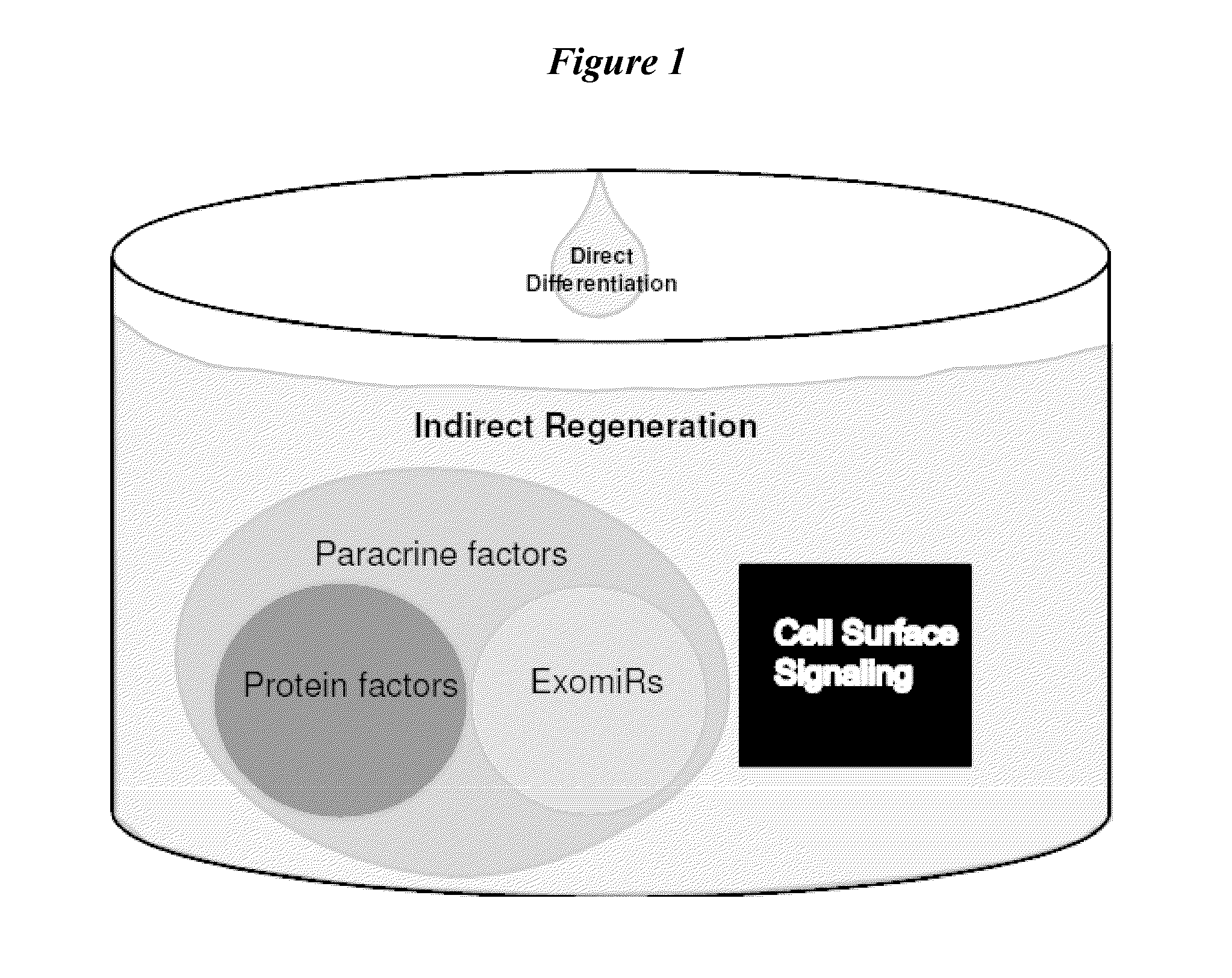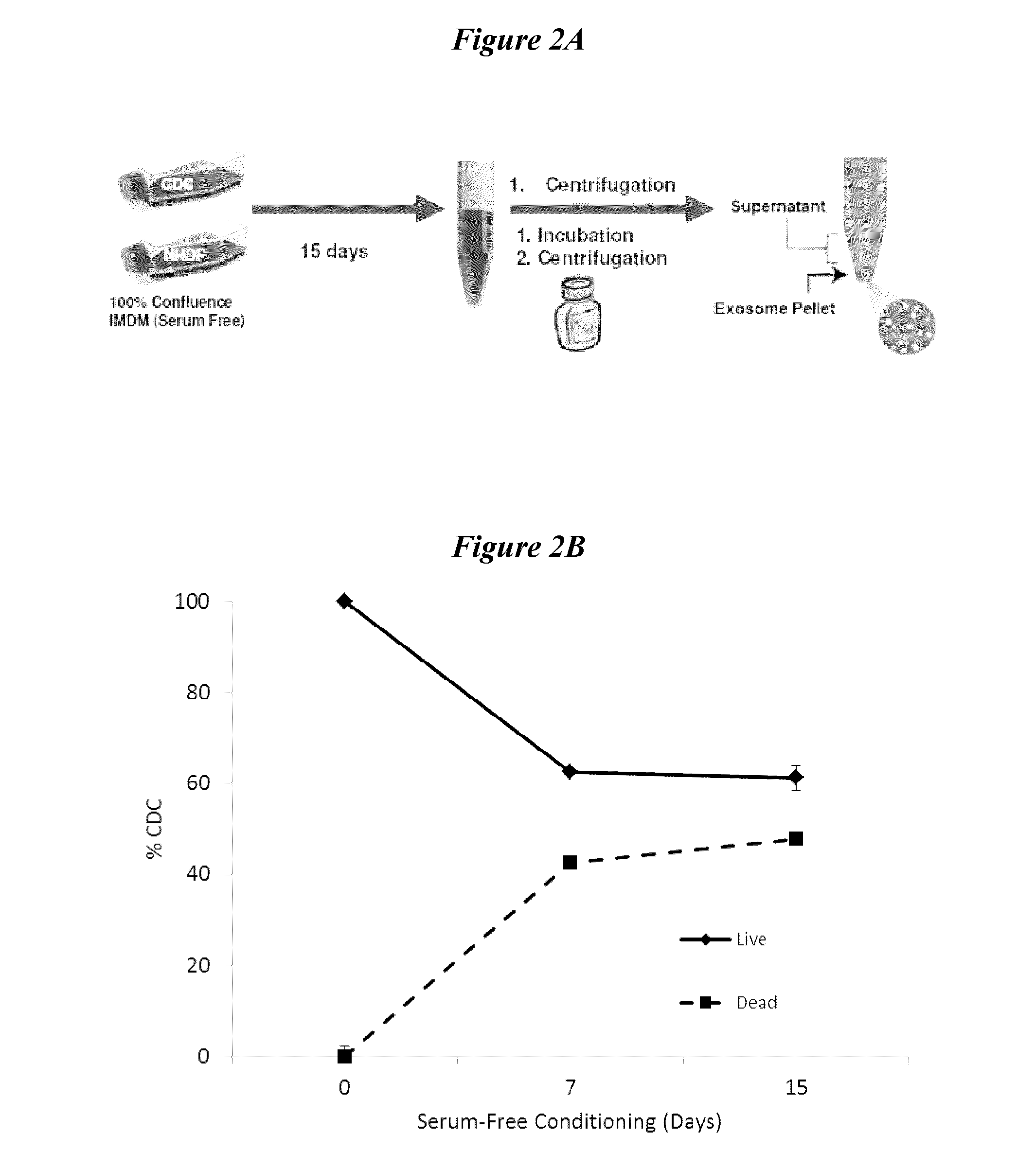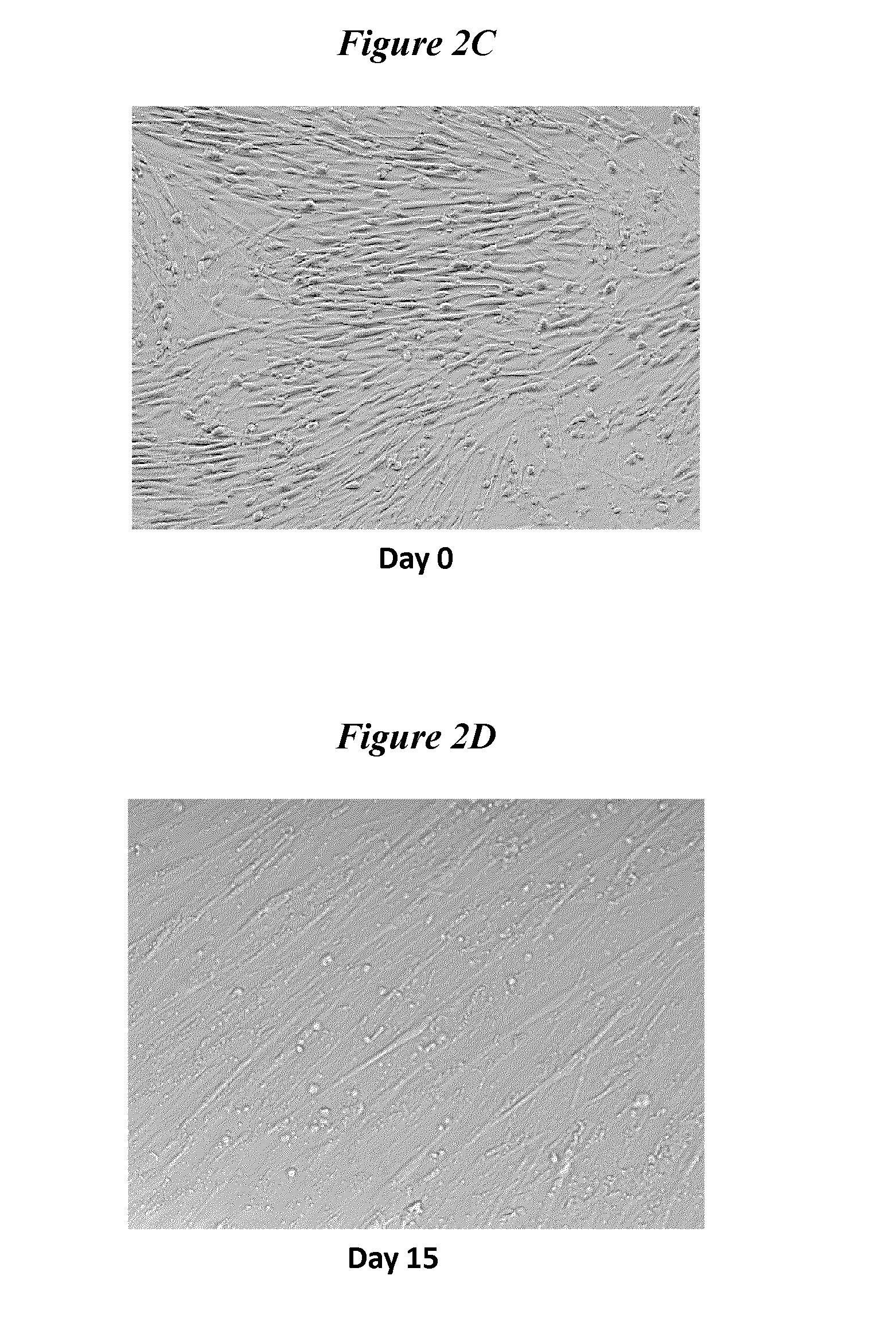Exosomes and micro-ribonucleic acids for tissue regeneration
a technology of exosomes and microribonucleic acids, applied in the field of repair or regeneration, can solve the problems of reducing the quality of life, reducing work efficiency, and reducing the productivity of workers, and achieves the effects of improving tissue function, reducing arrhythmias, and contractility
- Summary
- Abstract
- Description
- Claims
- Application Information
AI Technical Summary
Benefits of technology
Problems solved by technology
Method used
Image
Examples
example 1
Isolation and Characterization of Exosomes
[0083]Prior studies in the area of cardiac tissue repair and regeneration have demonstrated that the repair and / or regeneration of cardiac tissue is a result of both direct and indirect factors. For example, it has been shown that CDCs account for approximately 10% of regenerated cardiac tissue. Such studies suggest that alternative mechanisms, such as indirect effects, are at play. As discussed above, exosomes and their nucleic acid content may be involved, at least in part, in providing cellular or tissue repair and / or regeneration via indirect mechanisms. The present example was designed to characterize exosomes and their nucleic acid content.
[0084]In order to isolate exosomes, cultured cells were grown to 100% confluence in serum free media. For this experiment, exosome yield and RNA content was compared between cultured CDCs and normal human dermal fibroblast (NHDF) cells. It shall be appreciated that, in several embodiments, exosomes m...
example 2
Exosomes Promote Survival And Proliferation Of Other Cells
[0086]In vitro experiments were undertaken to evaluate the pro-regenerative and anti-apoptotic effects of exosomes on other cell types. Exosomes were isolated from CDCs or NHDF cells as discussed above. A portion of the exosome pellet fraction was then co-incubated with cultured neonatal rat ventricular myocytes (NRVM) in chamber slides for approximately 7 days. At the end of seven days, the co-cultures were evaluated by immunohistochemistry for changes in indices of proliferation or cell death (as measured by markers of apoptosis). A schematic for this protocol is shown in FIG. 4. FIG. 5A shows data related to death of the NRVM cells, as measured by TUNEL staining. Incubation of NRVM cells with exosomes isolated from CDCs resulted in a significantly lower degree of apoptosis, as compared to both control cells and cells incubated with exosomes from NHDF cells (CDC: 25.2±0.04%; NHDF: 45.1±0.05%, p<0.01); Control: 41.4±0.05%, n...
example 3
Exosomes Promote Angiogenesis
[0087]In addition to increased proliferation and / or reduced death of cells or tissue in a region of damage or disease, reestablishment or maintenance of blood flow may play a pivotal role in the repair or regeneration of cells or tissue. As such, the ability of exosomes to promote angiogenesis was evaluated. Human umbilical vein endothelial cells (HUVEC) were subjected to various co-incubation conditions. These conditions are depicted in FIG. 6. Briefly, HUVEC cells were grown in culture dishes on growth factor reduced MATRIGEL. The cells were grown in either neonatal rat cardiomyocyte media (NRCM), MRCM supplemented with CDC-derived exosomes, MRCM supplemented with NHDF-derived exosomes, vascular cell basal media (VCBM), or vascular cell growth media (VCGM). As shown in FIG. 7, VCGM induced robust tube formation as compared to VCBM (CDC: 9393±689; NHDF: 2813±494.5, control, 1097±116.1, n=3, p<0.05). Media from NRCM resulted in tube formation similar to ...
PUM
| Property | Measurement | Unit |
|---|---|---|
| diameter | aaaaa | aaaaa |
| diameter | aaaaa | aaaaa |
| diameter | aaaaa | aaaaa |
Abstract
Description
Claims
Application Information
 Login to View More
Login to View More - R&D
- Intellectual Property
- Life Sciences
- Materials
- Tech Scout
- Unparalleled Data Quality
- Higher Quality Content
- 60% Fewer Hallucinations
Browse by: Latest US Patents, China's latest patents, Technical Efficacy Thesaurus, Application Domain, Technology Topic, Popular Technical Reports.
© 2025 PatSnap. All rights reserved.Legal|Privacy policy|Modern Slavery Act Transparency Statement|Sitemap|About US| Contact US: help@patsnap.com



